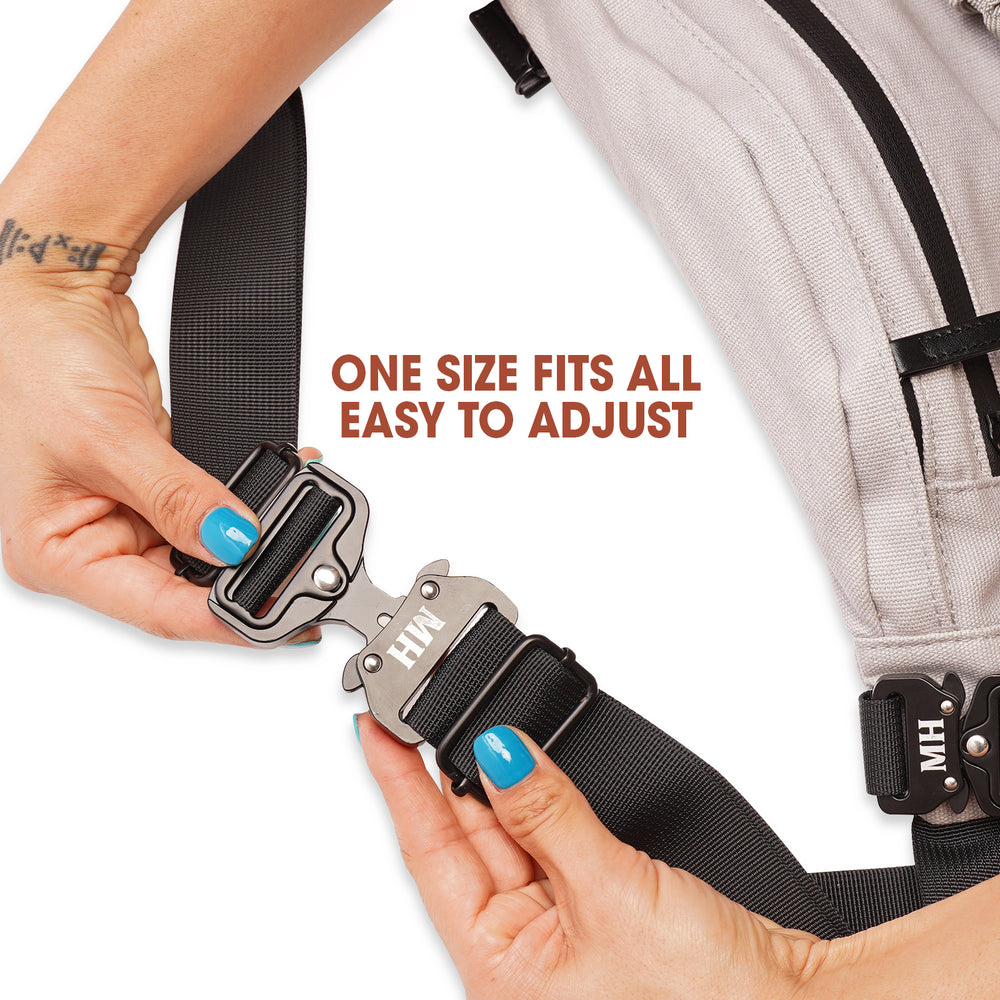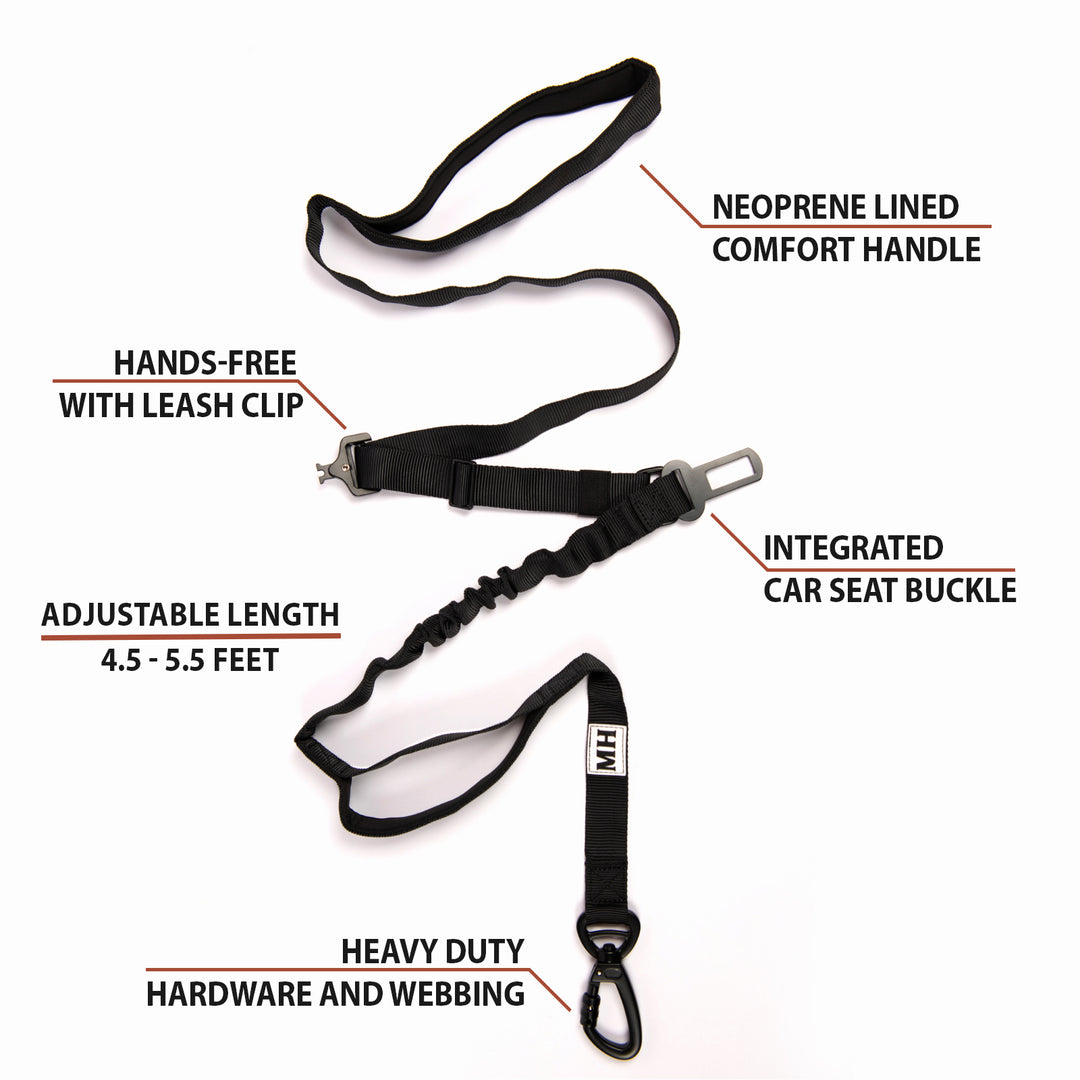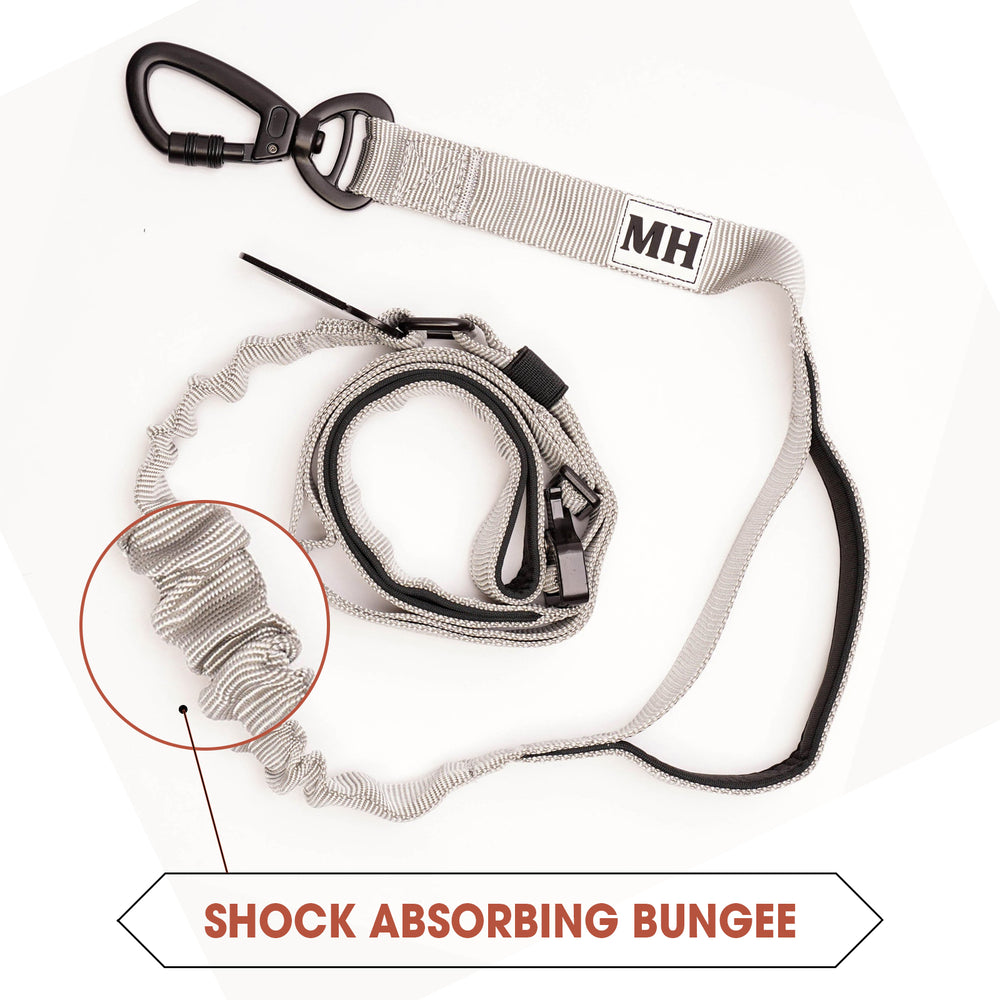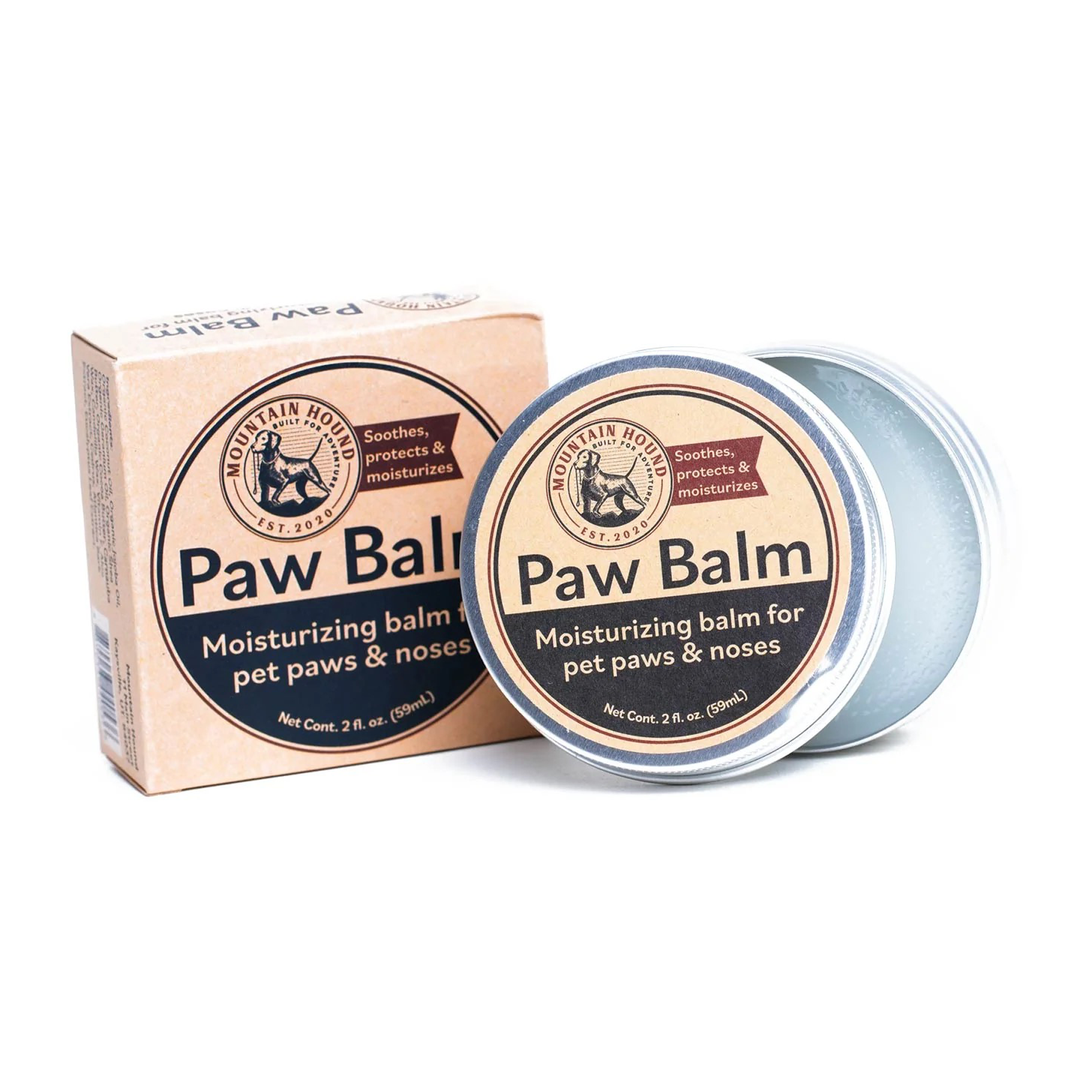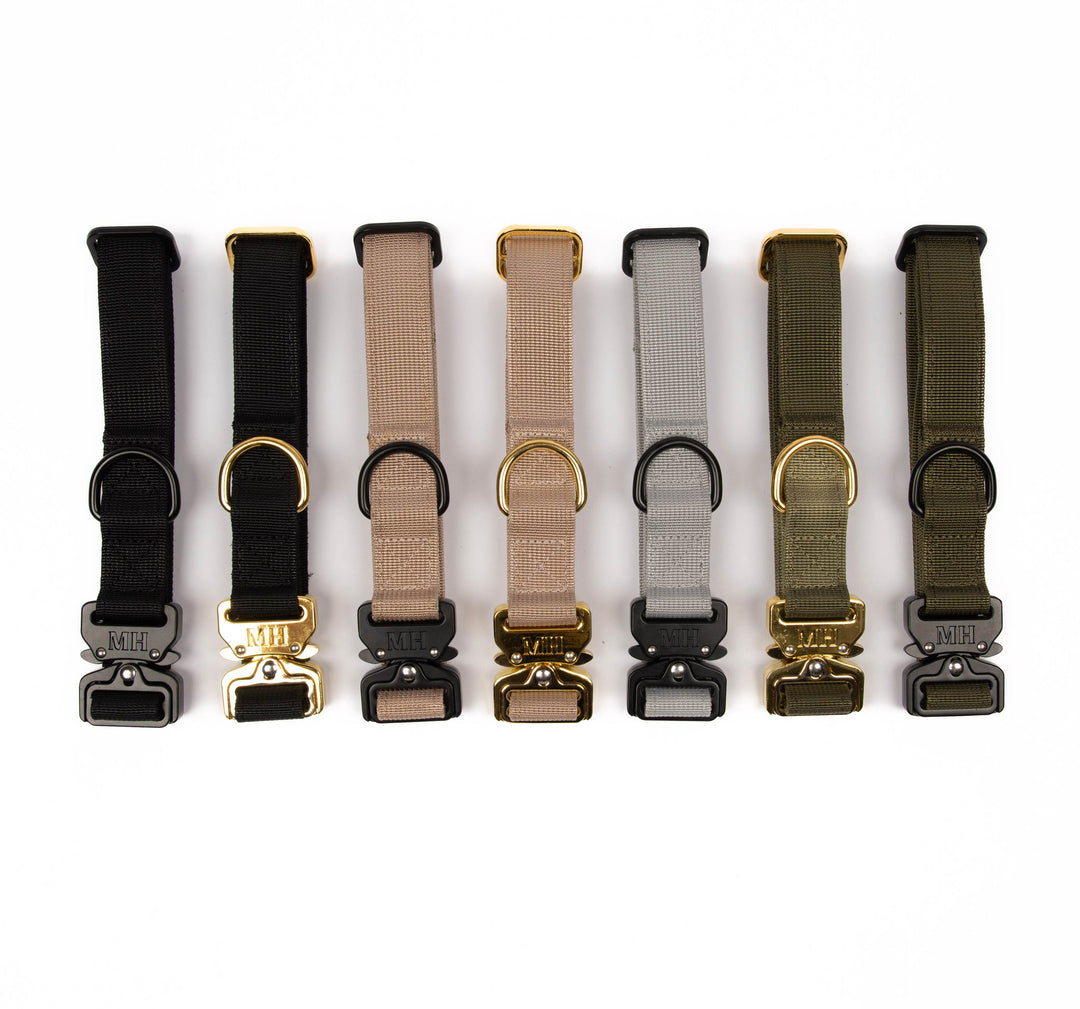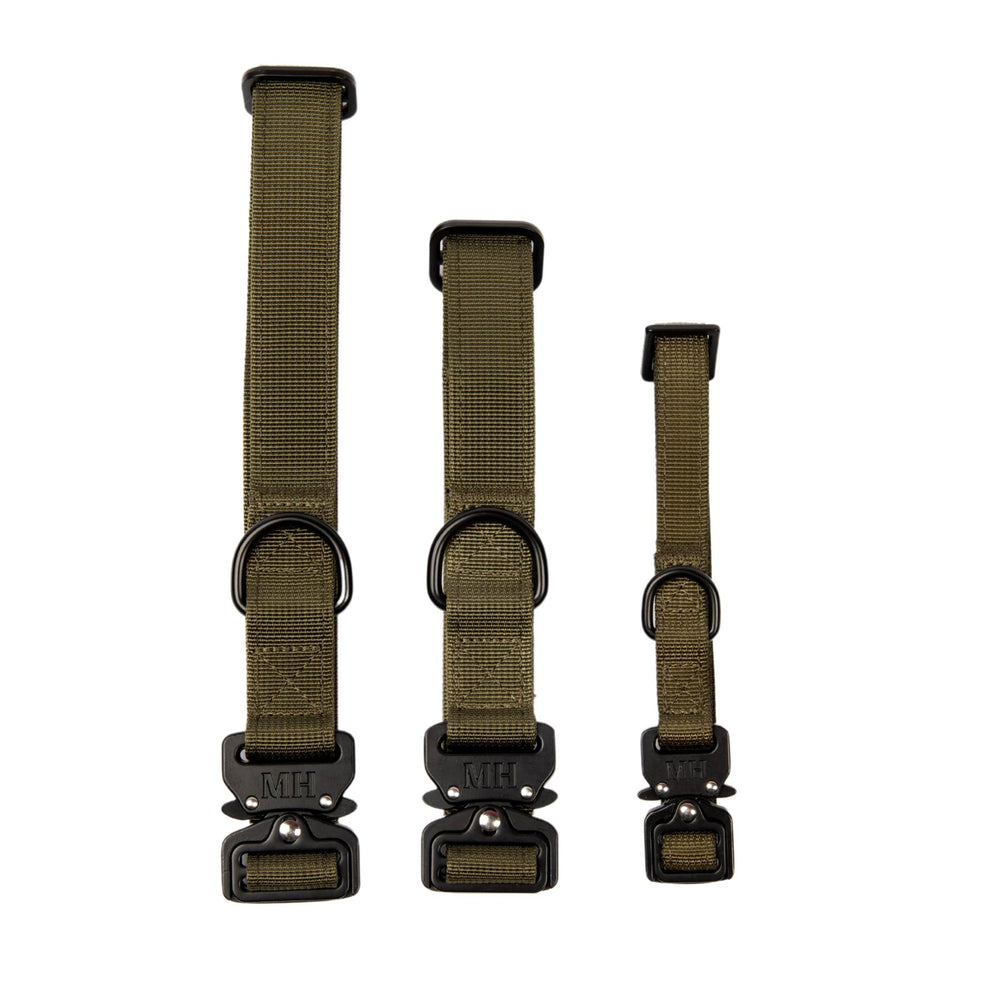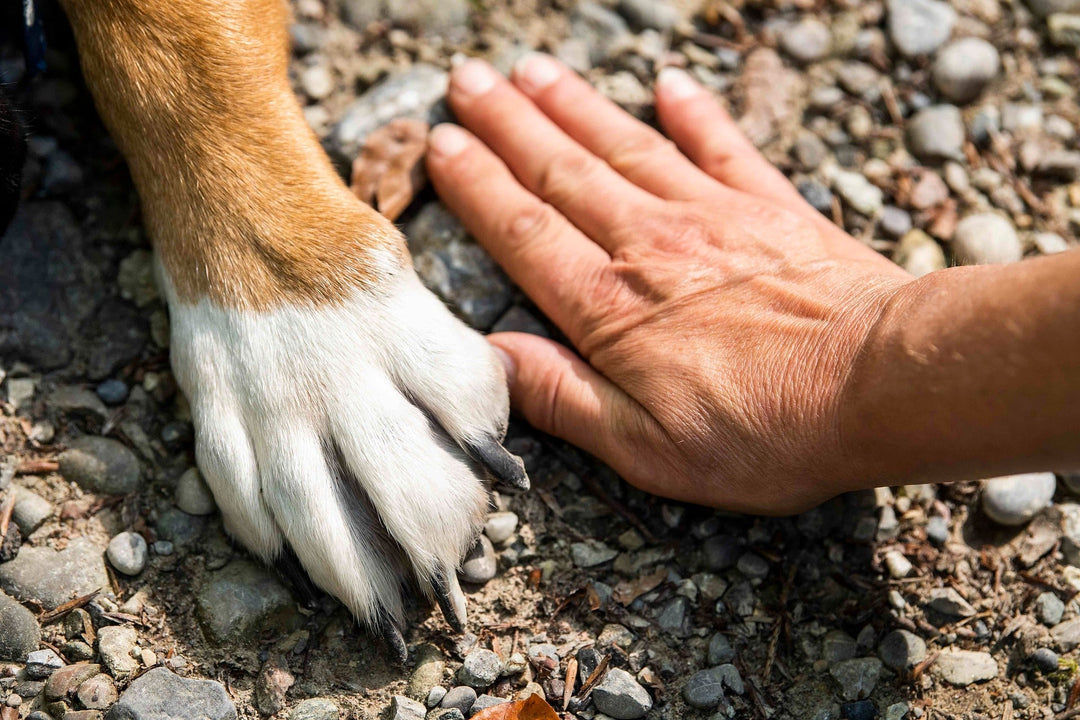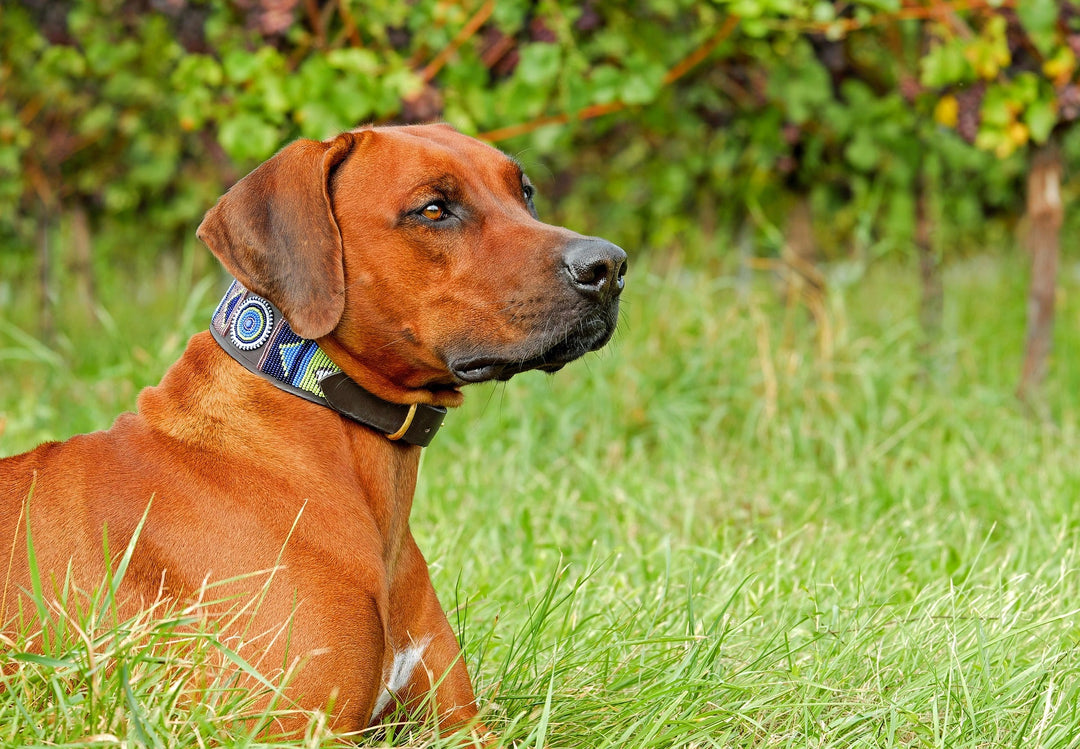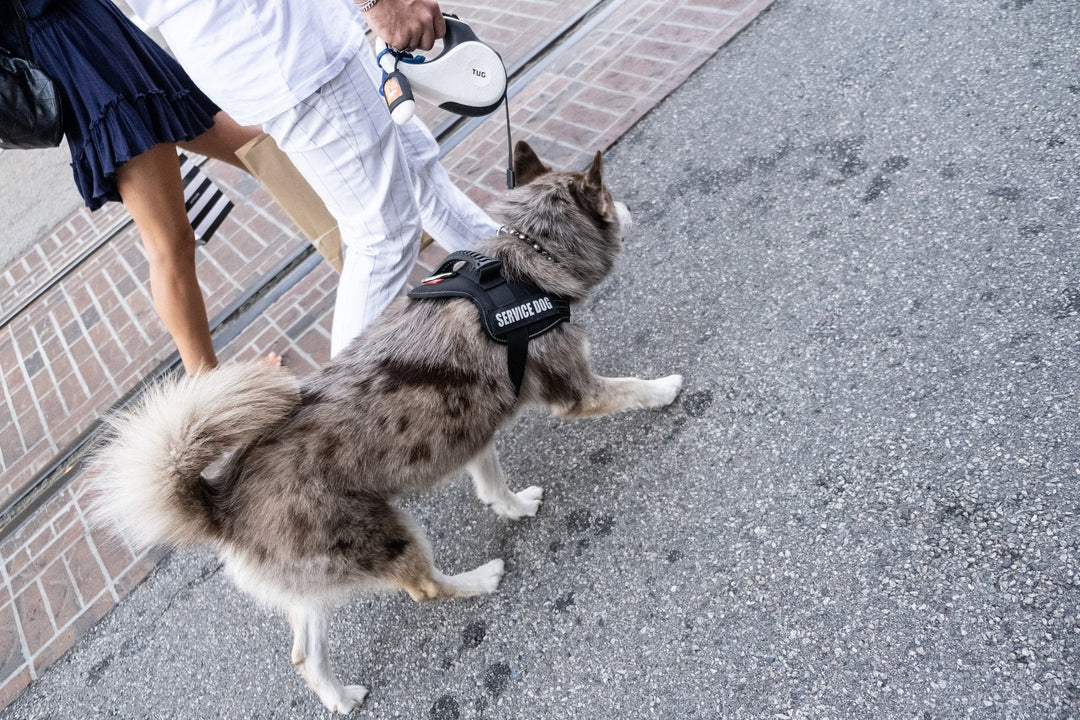Common Dog Leash Mistakes to Avoid
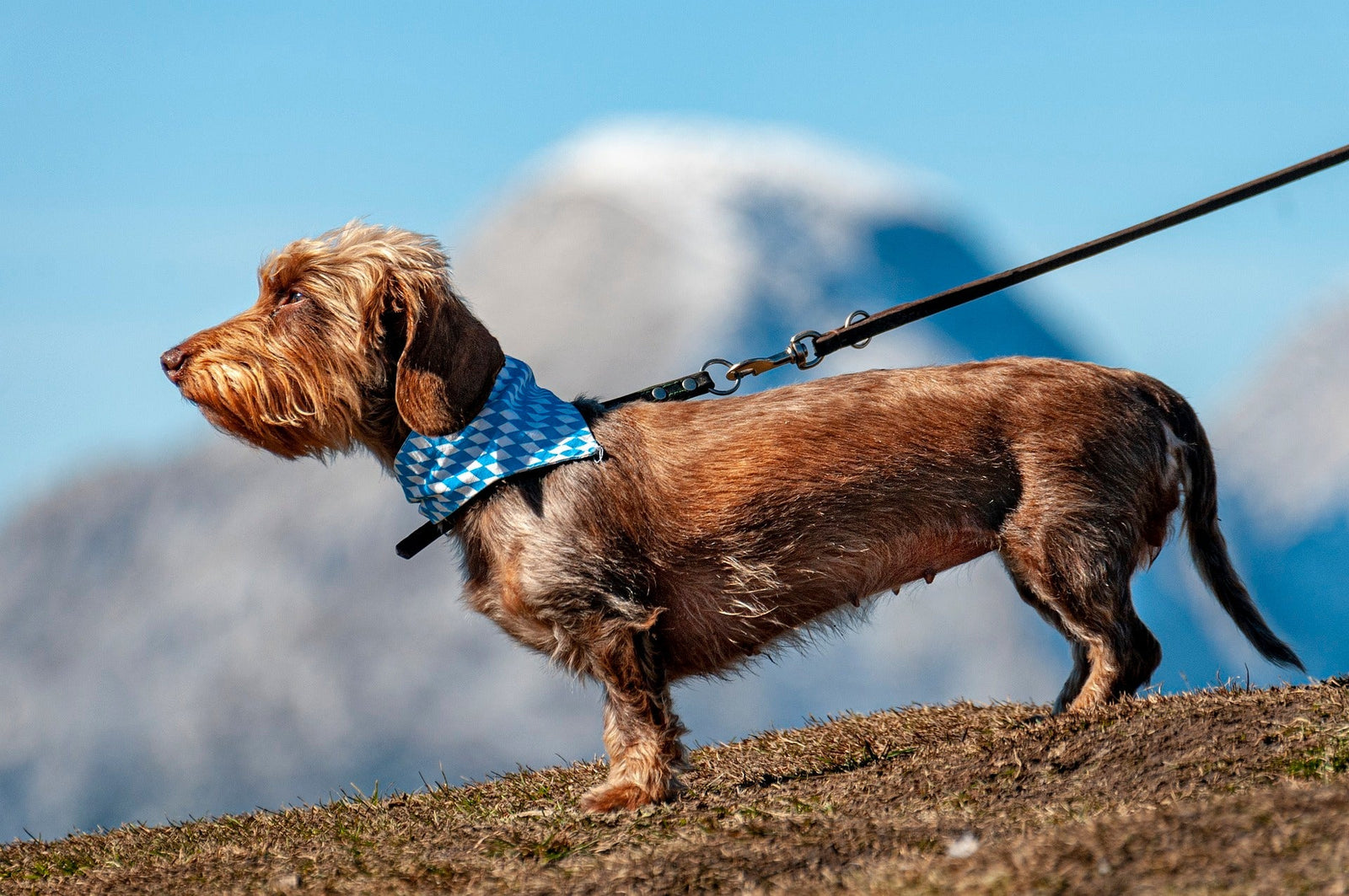
Dog leash training is an essential aspect of responsible dog ownership. Proper training ensures a safe and enjoyable walk and enhances the bond between you and your furry friend. However, there are common mistakes many dog owners make when it comes to using a dog leash.
In today’s Mountain Hound blog post, we'll explore common dog leash mistakes to avoid and provide some dog leash training and dog leash safety tips to ensure a positive and safe experience for you and your canine companion.
Using the Wrong Type of Leash
Selecting the appropriate leash for your dog is crucial. You can choose from different types of leashes, including standard flat leashes, retractable leashes, harnesses, and couplers. Each serves a different purpose, and choosing the wrong one can lead to difficulties during training.
For example, a retractable leash can reinforce pulling behavior, making leash training more challenging. It's often better to opt for a standard flat leash or a harness that provides more control and minimizes the risk of injuring your dog.
Failing to Adjust the Leash Length
Properly adjusting the leash length is a fundamental aspect of leash training. Having the leash too loose or too tight can affect your dog's behavior and comfort level. A tight leash can cause discomfort and even injure your dog, while a loose leash can cause your dog to feel less secure and increase the likelihood of pulling. If your dog constantly pulls, they may perceive it as acceptable behavior, making leash training more challenging.
You must ensure the leash is at an appropriate length, allowing your dog to have some freedom to move around while maintaining control. Adjust the length based on the situation, whether you're training, walking in a crowded area, or allowing your dog some extra space to explore.
Inconsistent Leash Training
Consistency is key in dog leash training. You can confuse your dog and hinder the learning progress when you’re inconsistent with commands, rules, or responses. If you allow your dog to pull on the leash during one walk and then correct them for it on another, they may not understand what's expected of them.
To avoid such mistakes, establish clear rules and commands for leash training and consistently reinforce them during every walk. Consistency helps your dog understand what behavior is acceptable and what is not.
Using the Leash as a Punishment Tool
A leash should never be used to punish your dog. Yanking, jerking, or using the leash aggressively when annoyed can cause physical harm and emotional distress to your furry friend. Using punishment can also create fear and anxiety, leading to behavioral problems.
Instead, use positive reinforcement techniques when training your dog on a leash. Positive reinforcement will create a positive association with the leash and help effectively train your pup. Incorporate strategies like rewarding good behavior with treats, praise, or affection to encourage them to repeat it.
Neglecting Leash Safety
Safety should always be a top priority when using a dog leash. Many accidents occur due to simple oversights, such as not securing the leash properly, allowing the leash to drag on the ground, or using a damaged leash.
Regularly check the leash for signs of wear and tear and replace it if needed. Always secure the leash properly to your dog's collar or harness to prevent them from breaking free and potentially getting injured or causing harm to others.
Skipping Leash Training
Skipping leash training altogether is a significant mistake. Proper training teaches your dog leash manners, making walks enjoyable for both of you. It also ensures the safety of your dog and those around you.
Invest time and effort in leash training, starting with basic commands like 'heel,' 'sit,' and 'stay.' Gradually introduce distractions to reinforce good behavior even in challenging situations.
Final Thoughts
Avoiding these common dog leash mistakes is crucial for a successful and enjoyable dog walking experience. By selecting the right leash, adjusting its length appropriately, maintaining consistency in training, using positive reinforcement, prioritizing safety, and investing time in proper training, you'll foster a strong bond with your dog and ensure their safety during walks. Remember, a well-trained dog on a leash is a happy and confident companion.



